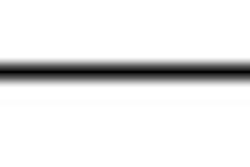Rough estimates predict that 200,000 senior procurement positions will open over the next few years. The inevitable talent vacuum is coming. Is your company prepared for the inevitable exodus of procurement talent?
Employees' diminishing retirement funds bought procurement teams much-needed breathing room from the departing Baby Boomer generation. However, the market will eventually recover and executives will be anxious to get on to the retirements they've worked so hard to earn. According to the U.S. Census Bureau, more than 60 million Baby Boomers will leave the workforce by 2025, and only 40 million new employees will enter. Are the ranks ready to close this gap and fill the leadership positions?
Strategic Sourcing's Special Role
Retiring Baby Boomers will affect almost every profession across all industries; very few occupations will be left untouched. Why the special emphasis placed on sourcing?
For organizations large and small, strategic sourcing has transformed into a key competitive weapon. The role of the chief procurement officer (CPO) is on the rise as sourcing organizations mature in their ability to achieve hard savings, cost avoidance and supplier value contributions. The recession emphasized this as sales have slowed and companies have faced the pressure to cut costs and increase savings. So what we see is a discipline that is evolving in its maturity, while, at the same time, demand for sourcing professionals is rising. The pending retirement waves are icing on the cake.
The challenge from a skill perspective is the discipline's highly specialized nature. Effective sourcing professionals have to learn the breadth of skills required by the source-to-contract process in addition to commodity specific expertise. Given that many commodities are sourced on a two- or three-year contract cycle, it can often take many years for new employees to mature into rounded sourcing professionals capable of strategic planning across multiple commodities. Like many professions, this development is accelerated by a solid university education, but it does not serve as a replacement for the relationship and experiential skills earned by managing commodities.
Generally speaking, two to three years are needed for new employees to master their first commodity, although this varies greatly based upon the complexity of the commodities and the depth of subject matter expertise required to understand it. For example, expertly managing a billion dollars in real-estate acquisitions for a major financial institution could require a decade or more of experience by an executive-level resource, while sourcing office supplies for a midsize corporation could be handled by a new employee with some coaching. The important lesson here is that a large part of success is defined by the sourcing knowledge resident in the individual, and the more critical and complex the commodity, the higher the skill requirements. So once the senior team leaves, years of knowledge and experience depart right along with them. This may be easily manageable in the case of office supplies, but it could be catastrophic if multiple commodity managers at the level of our real-estate example leave simultaneously.
Not buying into the challenges caused by the departing Baby Boomer generation? Putting the issue aside, the need for knowledge transfer and skill development for sourcing executives can be seen just as clearly through the recession. Departments are slashing budgets and reducing staff sizes, and resources are becoming continually scarce. More than ever before, organizations are leaning on the sourcing team to perform at greater levels with fewer resources. And, as we all know, year-over-year savings and value contributions become incrementally harder to achieve as more spend is placed under management and the low-hanging fruit is picked. Continuing to drive value requires an ever-increasing skilled set of sourcing professionals.
Between the impending demand shortage and current market pressures, the clock is ticking for sourcing departments to define a skill strategy. The time has come for companies to leverage the skills and talents that only exist in their senior procurement team's heads — and, more importantly, to develop strategies to pass along the generational expertise to the next wave of staffers before the existing talent is lost. It's the skill equivalent of cost-avoidance.
Opportunity Assessments — Identify the Talent Gaps
While procurement talent shortages are certainly coming, organizations still have time to prepare for the exodus of retirements. Smart companies are taking action and building infrastructures that continuously capture their current talent base's knowledge. The end goal: Creating a knowledge bank that can be utilized to build talent when skilled sourcing professionals become scarce.
The first step in building a talent infrastructure is identifying the processes that your organization needs to achieve desired savings levels each year. This sounds simple enough, but planning stages are absolutely critical to the program's success; without them your skill strategy won't be aligned with your sourcing objectives. Once management understands the end game — where the company wants to be financially — mapping a plan to a particular set of skills becomes simpler. Evaluate the team honestly by asking these questions:
Honestly assessing the current skill levels across the entire procurement team will identify the gaps. The result will be a prioritized list of skill gaps aligned with your business objectives.
Once talent gaps are identified and prioritized based on their importance relating directly to business objectives, it is a simple matter of balancing your investment in skill development against the risk associated with your key projects. Making this connection is essential for proving return on investment.
Execution — Focus on Peer-to-Peer Learning and Open Communication
After completing the skill assessment and prioritizing the goals for the training program, knowledge transfer can begin. Remember, the plan should be mapped to an overall goal. For the training program to be successful, focus on implementing structured skill-building activities that tie directly to business processes. These programs can vary from simple "lunch and learns" and mentoring programs to blended training and formal certification.
At the same time, create an atmosphere that fosters learning and teamwork. Unstructured learning is as important as planned programs. Employees must feel comfortable asking for help, bouncing ideas off one another and taking on difficult projects. Often, due to the formal nature of their strategy, organizations struggle with training exactly because employees tend to feel intimidated asking questions around their superiors simply because no one wants to look incompetent in front of their boss. That's why it's so important to foster both the structured and non-structured learning paths.
Creating a community that supports peer-to-peer learning acts as an excellent solution to this common problem. For example, to help foster skill development across the client base of my company, BravoSolution, we encourage clients to use the Bravo Education Network, a series of online communities where over 5,000 procurement professionals interact on a daily basis. These communities provide both private rooms restricted to a single organization and rooms open to multiple like organizations. Through these communities, supply chain professionals can share best practices, learning from each other's experiences and passing along generational expertise regularly.
Client feedback on this initiative has been tremendous. A recent community member posted the following in response to the support she received from her fellow community members: "I was able to effectively gather data to help work through a tight timeline and present a market sampling of intel to my executive team. BEN is a great tool— I appreciate the effort from the network of clients who were willing to share their experience!"
The educational communities' benefits, and the overriding need for peer-to-peer learning, can be seen through the recession. Since the economic meltdown, participation in the Bravo Education Network has grown exponentially — by more than 900 percent since its launch date in 2007.
Overall success can be attributed to the community's openness. Allowing employees to communicate and learn in a private, "viral" community lets team members collaborate with their peers around the world safely, in non-public environments that foster open communication.
Ensure that the skills and best practices developed by team members are being maintained. Conduct and document training in a way that ensures all team members routinely practice the skills that are important to their business. After program completion, create a library of best practices and past knowledge from which new team members can learn. Once the process for documentation and community support are in place, teams can quickly assimilate new hires and capture guidance and intellectual property from current team members before they depart.
Skill Assessment and Knowledge Transfer in Action
In one pretty typical scenario in 2009, an energy company found itself with a newly established procurement team, formed after several mergers and acquisitions. The new team — with a new procurement director — found it difficult to work together and challenging to identify what processes they needed for the company to achieve business objectives. To overcome the challenge of unfamiliarity, the team executed BravoSolution's Opportunity Assessment training course. The program assessed the team's skill level and identified the knowledge gaps. After identifying talent gaps and mapping them to procurement objectives, team training in the specific areas can begin. Soon thereafter, the team began working together so effectively that an outsider would assume they have been together for years.
In a separate scenario, a major healthcare network ended 2009 needing to deploy a new analytical software application to its 600 hospital organizations. Never having implemented such a large-scale software change, the organization struggled with how to approach the problem. As a solution, the organization turned to training, educating company leadership in change and deployment management. As a result, the team created a completely new skill development program for the entire network of hospitals. The results have been outstanding; the team entered the second quarter of 2010 confident, armed and ready to execute the deployment.
The Clock's Ticking
Whatever the motivation — the impending talent drain resulting from the departure of Baby Boomers, the need for a more highly skilled team or a desire to better integrate new employees and pass along generational expertise — organizations must create a culture of systemic and institutionalized knowledge transfer containing both structured and non-structured learning.
In a technology-driven age, procurement and sourcing tools will continually become smarter and more abundant. But without a skilled and talented employee base, organizations will struggle to realize these tools' potential.
As the market begins to rebound, teams will grow and budgets will expand. Smart organizations, however, will stay disciplined and focus on documenting, sharing and ingraining that institutional knowhow in the next-generation of leaders. Forward-thinking managers will ensure that team growth does not dilute the average organizational skill level.
What better time than now for procurement departments to begin evaluating their talent and implementing these programs? Whether the results come to fruition as we climb out of the recession, as the Baby Boomers retire, or no matter what comes in the next decade, the return on investment will be realized.
About the Author: John Shaw, a 2010 S&DCE Pro to Know, is the director of educational services at BravoSolution, which supports procurement professionals with tools and services to identify sourcing opportunities, prioritize initiatives, execute projects with tailored solutions, and realize the benefits of their initiatives. More information at www.bravosolution.com.
Employees' diminishing retirement funds bought procurement teams much-needed breathing room from the departing Baby Boomer generation. However, the market will eventually recover and executives will be anxious to get on to the retirements they've worked so hard to earn. According to the U.S. Census Bureau, more than 60 million Baby Boomers will leave the workforce by 2025, and only 40 million new employees will enter. Are the ranks ready to close this gap and fill the leadership positions?
Strategic Sourcing's Special Role
Retiring Baby Boomers will affect almost every profession across all industries; very few occupations will be left untouched. Why the special emphasis placed on sourcing?
For organizations large and small, strategic sourcing has transformed into a key competitive weapon. The role of the chief procurement officer (CPO) is on the rise as sourcing organizations mature in their ability to achieve hard savings, cost avoidance and supplier value contributions. The recession emphasized this as sales have slowed and companies have faced the pressure to cut costs and increase savings. So what we see is a discipline that is evolving in its maturity, while, at the same time, demand for sourcing professionals is rising. The pending retirement waves are icing on the cake.
The challenge from a skill perspective is the discipline's highly specialized nature. Effective sourcing professionals have to learn the breadth of skills required by the source-to-contract process in addition to commodity specific expertise. Given that many commodities are sourced on a two- or three-year contract cycle, it can often take many years for new employees to mature into rounded sourcing professionals capable of strategic planning across multiple commodities. Like many professions, this development is accelerated by a solid university education, but it does not serve as a replacement for the relationship and experiential skills earned by managing commodities.
Generally speaking, two to three years are needed for new employees to master their first commodity, although this varies greatly based upon the complexity of the commodities and the depth of subject matter expertise required to understand it. For example, expertly managing a billion dollars in real-estate acquisitions for a major financial institution could require a decade or more of experience by an executive-level resource, while sourcing office supplies for a midsize corporation could be handled by a new employee with some coaching. The important lesson here is that a large part of success is defined by the sourcing knowledge resident in the individual, and the more critical and complex the commodity, the higher the skill requirements. So once the senior team leaves, years of knowledge and experience depart right along with them. This may be easily manageable in the case of office supplies, but it could be catastrophic if multiple commodity managers at the level of our real-estate example leave simultaneously.
Not buying into the challenges caused by the departing Baby Boomer generation? Putting the issue aside, the need for knowledge transfer and skill development for sourcing executives can be seen just as clearly through the recession. Departments are slashing budgets and reducing staff sizes, and resources are becoming continually scarce. More than ever before, organizations are leaning on the sourcing team to perform at greater levels with fewer resources. And, as we all know, year-over-year savings and value contributions become incrementally harder to achieve as more spend is placed under management and the low-hanging fruit is picked. Continuing to drive value requires an ever-increasing skilled set of sourcing professionals.
Between the impending demand shortage and current market pressures, the clock is ticking for sourcing departments to define a skill strategy. The time has come for companies to leverage the skills and talents that only exist in their senior procurement team's heads — and, more importantly, to develop strategies to pass along the generational expertise to the next wave of staffers before the existing talent is lost. It's the skill equivalent of cost-avoidance.
Opportunity Assessments — Identify the Talent Gaps
While procurement talent shortages are certainly coming, organizations still have time to prepare for the exodus of retirements. Smart companies are taking action and building infrastructures that continuously capture their current talent base's knowledge. The end goal: Creating a knowledge bank that can be utilized to build talent when skilled sourcing professionals become scarce.
The first step in building a talent infrastructure is identifying the processes that your organization needs to achieve desired savings levels each year. This sounds simple enough, but planning stages are absolutely critical to the program's success; without them your skill strategy won't be aligned with your sourcing objectives. Once management understands the end game — where the company wants to be financially — mapping a plan to a particular set of skills becomes simpler. Evaluate the team honestly by asking these questions:
- What are my organization's top business priorities for sourcing?
- What projects are critical to the success of the sourcing plan?
- Do we have the skills to succeed on these projects?
Honestly assessing the current skill levels across the entire procurement team will identify the gaps. The result will be a prioritized list of skill gaps aligned with your business objectives.
Once talent gaps are identified and prioritized based on their importance relating directly to business objectives, it is a simple matter of balancing your investment in skill development against the risk associated with your key projects. Making this connection is essential for proving return on investment.
After completing the skill assessment and prioritizing the goals for the training program, knowledge transfer can begin. Remember, the plan should be mapped to an overall goal. For the training program to be successful, focus on implementing structured skill-building activities that tie directly to business processes. These programs can vary from simple "lunch and learns" and mentoring programs to blended training and formal certification.
At the same time, create an atmosphere that fosters learning and teamwork. Unstructured learning is as important as planned programs. Employees must feel comfortable asking for help, bouncing ideas off one another and taking on difficult projects. Often, due to the formal nature of their strategy, organizations struggle with training exactly because employees tend to feel intimidated asking questions around their superiors simply because no one wants to look incompetent in front of their boss. That's why it's so important to foster both the structured and non-structured learning paths.
Creating a community that supports peer-to-peer learning acts as an excellent solution to this common problem. For example, to help foster skill development across the client base of my company, BravoSolution, we encourage clients to use the Bravo Education Network, a series of online communities where over 5,000 procurement professionals interact on a daily basis. These communities provide both private rooms restricted to a single organization and rooms open to multiple like organizations. Through these communities, supply chain professionals can share best practices, learning from each other's experiences and passing along generational expertise regularly.
Client feedback on this initiative has been tremendous. A recent community member posted the following in response to the support she received from her fellow community members: "I was able to effectively gather data to help work through a tight timeline and present a market sampling of intel to my executive team. BEN is a great tool— I appreciate the effort from the network of clients who were willing to share their experience!"
The educational communities' benefits, and the overriding need for peer-to-peer learning, can be seen through the recession. Since the economic meltdown, participation in the Bravo Education Network has grown exponentially — by more than 900 percent since its launch date in 2007.
Overall success can be attributed to the community's openness. Allowing employees to communicate and learn in a private, "viral" community lets team members collaborate with their peers around the world safely, in non-public environments that foster open communication.
Ensure that the skills and best practices developed by team members are being maintained. Conduct and document training in a way that ensures all team members routinely practice the skills that are important to their business. After program completion, create a library of best practices and past knowledge from which new team members can learn. Once the process for documentation and community support are in place, teams can quickly assimilate new hires and capture guidance and intellectual property from current team members before they depart.
Skill Assessment and Knowledge Transfer in Action
In one pretty typical scenario in 2009, an energy company found itself with a newly established procurement team, formed after several mergers and acquisitions. The new team — with a new procurement director — found it difficult to work together and challenging to identify what processes they needed for the company to achieve business objectives. To overcome the challenge of unfamiliarity, the team executed BravoSolution's Opportunity Assessment training course. The program assessed the team's skill level and identified the knowledge gaps. After identifying talent gaps and mapping them to procurement objectives, team training in the specific areas can begin. Soon thereafter, the team began working together so effectively that an outsider would assume they have been together for years.
In a separate scenario, a major healthcare network ended 2009 needing to deploy a new analytical software application to its 600 hospital organizations. Never having implemented such a large-scale software change, the organization struggled with how to approach the problem. As a solution, the organization turned to training, educating company leadership in change and deployment management. As a result, the team created a completely new skill development program for the entire network of hospitals. The results have been outstanding; the team entered the second quarter of 2010 confident, armed and ready to execute the deployment.
The Clock's Ticking
Whatever the motivation — the impending talent drain resulting from the departure of Baby Boomers, the need for a more highly skilled team or a desire to better integrate new employees and pass along generational expertise — organizations must create a culture of systemic and institutionalized knowledge transfer containing both structured and non-structured learning.
In a technology-driven age, procurement and sourcing tools will continually become smarter and more abundant. But without a skilled and talented employee base, organizations will struggle to realize these tools' potential.
As the market begins to rebound, teams will grow and budgets will expand. Smart organizations, however, will stay disciplined and focus on documenting, sharing and ingraining that institutional knowhow in the next-generation of leaders. Forward-thinking managers will ensure that team growth does not dilute the average organizational skill level.
What better time than now for procurement departments to begin evaluating their talent and implementing these programs? Whether the results come to fruition as we climb out of the recession, as the Baby Boomers retire, or no matter what comes in the next decade, the return on investment will be realized.
About the Author: John Shaw, a 2010 S&DCE Pro to Know, is the director of educational services at BravoSolution, which supports procurement professionals with tools and services to identify sourcing opportunities, prioritize initiatives, execute projects with tailored solutions, and realize the benefits of their initiatives. More information at www.bravosolution.com.

















![Pros To Know 2026 [color]](https://img.sdcexec.com/mindful/acbm/workspaces/default/uploads/2025/08/prostoknow-2026-color.mduFvhpgMk.png?ar=16%3A9&auto=format%2Ccompress&bg=fff&fill-color=fff&fit=fill&h=135&q=70&w=240)